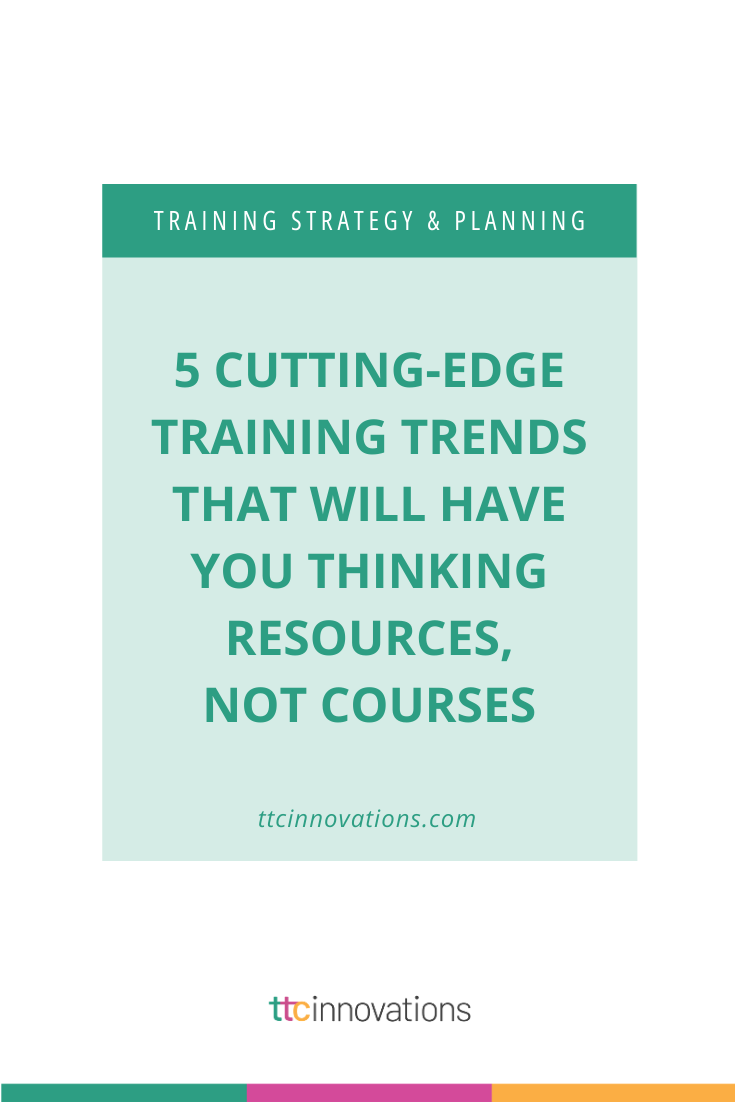When is the last time you reached into your company’s learning database and took a full online course? When is the last time you sat in a training class?
Now think about this: When is the last time you Googled something to get an answer?
For many of you, the answer is, “30 seconds ago when I found this article.”
The way we seek out information has changed seismically, and this fact is just as true in the workplace as when you’re sitting at home looking for a good lasagna recipe. We’ve been trained by modern technology to seek out resources, not courses. 21st century minds don’t want to spend time deep diving into a course — they want just-in-time training with none of the fluff.”
This brings us to training and development strategy. Courses will always be important — sometimes you do need that deep dive — but if you’re stuck in the old-school train of thought that leads you to create a course for everything, you’re setting yourself up for a trip to the dustbin of training history.
Training strategy is changing, and one of the best ways to prepare for the future is to start thinking resources, not courses. Share on X
A resource gives users quick access to relevant information so they can continue working nearly seamlessly. When you change your mindset, you’ll be prepared for the latest trends and beyond. Here are five important cutting-edge trends that beg for resource-based thinking.
Integrating Training into the Workflow
Google doesn’t ask us to stop working. That’s one of the reasons it’s taken the world by storm. Your workers want to keep moving. Delays due to extensive training not only interfere with project schedules, they can keep employees away from their homes and families. With the right resources, you can integrate their training directly into the workflow — and become their on-the-job Google.
Problem-based learning (the new microlearning) involves creating a database of resources that can be accessed seamlessly and quickly.
Remote Training
It seems like only yesterday that we could gather everyone in the same room for a training session without spending a fortune on travel. Those days, however, are gone for most large companies. We’re getting more and more scattered geographically, and remote training is becoming more and more practical. Creating a consistent, well-indexed, and accessible library of resources is essential for training on the world stage.
Mobile Learning
More and more training is being done at home, on the subway, and even on vacation. But who wants to take a 30-minute course on finance between stops on the train?
A library of simple, concise resources will help workers learn at their convenience. Yes, some may technically still be “courses,” but workers will see them as a quick way to get the specific information they need.

On-Demand Webinar
The Five Guiding Principles of Effective Microlearning: When and where to incorporate microlearning into your training strategy.
Self-Directed Training
Nothing encourages training like putting workers in charge of their own learning. A good self-directed training platform (in addition to being user-friendly) offers a variety of formats — and some of them should be resource, not course, based. Yes, workers will still look for complete courses in a self-directed environment. But they’ll also pop in for something quick when they’re in between tasks, and they may need resources to back up the courses they do take.
User-Generated Training
The importance of user-generated training in capturing institutional knowledge and developing “on-the-ground” training cannot be overstated, and today’s technology — online resources, crowdsourcing, etc. — allows us to create databases of resources like never before.
You’ll probably have a hard time getting Bob in sales to develop an entire course before he retires in two weeks, but he’s more than likely to help you by providing resources to keep his knowledge alive and well. User-generated training is, in fact, a resource made up of other resources.
Be the Resource You Want to See in the World
I’m sure I don’t have to tell you that training and development is changing faster than ever before. There’s no way to anticipate everything, but the shift toward resources and away from courses is fundamental to whatever the future might bring. Staying relevant means changing your thinking — and becoming a resource the company and the workforce will look to with respect.








